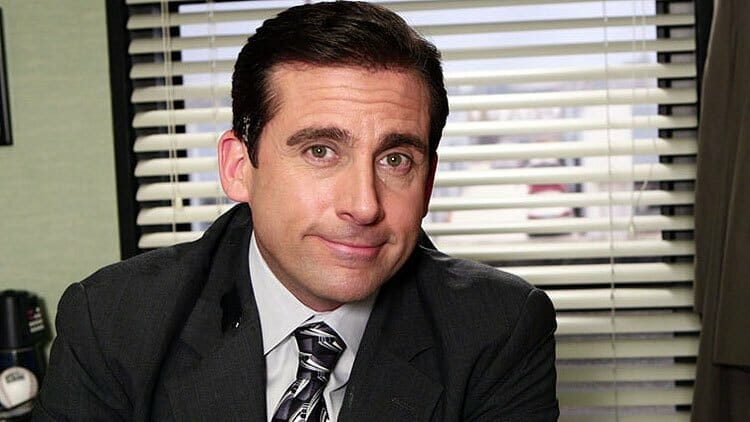Memes: The medium is the message, yes, but in the modern streaming marketplace the medium is also the marketing.
Shows and movies most agree are mediocre at best can pull in huge streaming numbers on Netflix with no marketing, simply because the friction to start watching is so low. Before you know it episode two is playing and it’s harder to stop than finish the season. Meanwhile, masterpieces of cinema flounder in indie cinemas as the friction (travel, cost, scheduling, etc) is far too high.
To understand why this continues to happen I should quickly explain a summary of BJ Fogg’s lifetime of research in behavior science (and he emphasizes it can be done in a sentence!). All behavior fundamentally comes down to this: Is the motivation to act higher than the friction of the task (how difficult the task is to achieve)? If yes, the action occurs, if not…then it doesn’t.
Thus the easiest way to get someone to act isn’t to increase motivation but to decrease friction. This is what the streaming marketplace does. Netflix doesn’t need a 50 million dollar marketing campaign to manufacture enough hype to get people to endure the friction associated with going to the cinema…you’re already on their platform, Queens Gambit is no 1 on trending, and with little conscious effort or decision, you’re already watching.
You may be asking why memes matter for the massive franchises you love, like DC, Marvel, Star Wars. Well, let’s imagine a casual viewer, someone who’s far from a Star Wars fan. They see the influx of The Mandalorian memes (digital word of mouth) and while on Disney Plus are nudged toward the show further and give it a go.

One episode bleeds into the next and over a lazy weekend, they have watched the whole show. They’ve been bitten by the Star Wars bug. But unlike times past where catching up requires a huge investment (buying all the movies, Clone Wars seasons, etc, talking to someone who knows the universe to recommend a viewing order) the entire universe is right there, in order, ready to watch on a whim.
Now Disney has another huge Star Wars fan, buying merch, hyping the franchise, making memes, spreading the digital word of mouth. Couple this with Disney Plus’ clear vertical integration this new fan now has trust in the larger Disney brand and Disney has earned a massive deposit in their brand goodwill bank. Now compare this to a competitor whose franchise is still split over multiple distribution channels, or has regional distributors or any of the other seemingly insignificant elements when thinking purely of the quality of the content you produce, that is actually far more important in the fate of your franchise, brand, and success.

One must note however the process by which this consumer became a rabid Star Wars fan could have been interrupted at any time, this is the importance of making watching the next installment easier than any other option. This is the defining feature of the attention economy…if another app, a social media site, anything draws their attention you have to motivate them back to your service, it’s much easier to simply maintain their attention.
This is one of the reasons advertiser-supported tv is dead in the under 35 demos, it is impossible to maintain attention with constant interruptions and a million alternative options with constant engagement. Thus for any entertainment platform to succeed they need to minimize the friction to both stay on the platform and to keep consuming any given franchise or show (which requires vertical integration as any gaps, missing seasons, missing movies, etc, act as a massive attention destabilizer).
Digital borders are another significant factor in the need for seamless, universal platforms. Digital borders do not exist and obviously, spoilers leak if one has staggered releases. But more importantly, consumer standards change and resentment builds if people see people they know (including public figures) in other countries getting a significantly better experience, access to more content, or prioritized content access. Your platform essentially sets the standard and is then unable to live up to it. This loses and alienates consumers in other countries (who buy as much merch, generate as much digital word of mouth, generate as many memes) who are integral to the success of your franchises and corporate profits.
NBC’s The Office is the perfect example of friction and popularity. The Office rose to mega-franchise levels of popularity primarily because of its ease of access on Netflix (obviously coupled with its quality, genius, and light serialization making it perfect for binging). However, NBC recently pulled it off Netflix in the US to launch their own sub-par streaming service they view as a supplement to their traditional broadcast rather than their primary focus (which is shown in its structured, dated ad structured tiers and more).

Now viewership numbers are hard to come by but talk to any Office fan and they will talk your ear off about buying the blu ray, using a VPN for Netflix, or barely rewatching at all…all because of the Peacock interface ruins the experience. This recent example perfectly shows all the issues brought forth. One would think die-hard Office fans (most of whom have seen the show 20+ times) wouldn’t be affected by the minor frictions of Peacock. Yet here we are, with meme after meme mocking or attacking Peacock, because friction compounds, quickly becoming greater than motivation.
NBC’s handling of The Office compared to Netflix’s is the perfect example of traditional media marketing vs new media (one built The Office into arguably the most-watched show of all time, the other squandered said popularity). How has NBC handled The Office since getting the rights back for Peacock? They’ve marketed the hell out of it, adverts, talk shows you name it. This is the traditional old-school approach, like marketing a movie, generate hype, make it a must-see and the consumer will have enough motivation to overcome whatever friction is inherent in your distribution method (delayed-release dates, regional distributors, scheduled viewing, cost, physical travel, etc). How did Netflix handle The Office, however? They didn’t.

That is to say, they didn’t market it. They didn’t push it hard outside of the platform. They simply focused on the platform itself, digital word of mouth, memes and the algorithm made The Office (especially given its quality) an essential part of the cultural zeitgeist. Then when the average consumer (who at this point was spending considerable time on the platform) saw The Office on the platform, they started with ease (and more importantly continued with ease, one episode bleeding into the next) thus further contributing to the marketing themselves (training the algorithm to suggest it to others, adding to the digital word of mouth through memes and references, conversational quirks, etc).
This thus created a massive positive feedback loop wherein The Office accelerated it’s own popularity exponentially, ease of access on a seamless platform being the driving factor of this. That brings us to the new truth of the entertainment industry that is more important to the future of the franchises you love than anything else. Investment in seamless, internationally universal platforms (with vertically integrated branding ala Disney+) is considerably more important than marketing. The medium is the marketing.
For more film, gaming, anime, and tv news, trailers, and updates make sure to keep it locked right here at The Nerdy Basement. And while you’re here, please consider supporting us on Patreon. It’s an easy way of supporting us so we can keep proving you with your Nerdy News!

